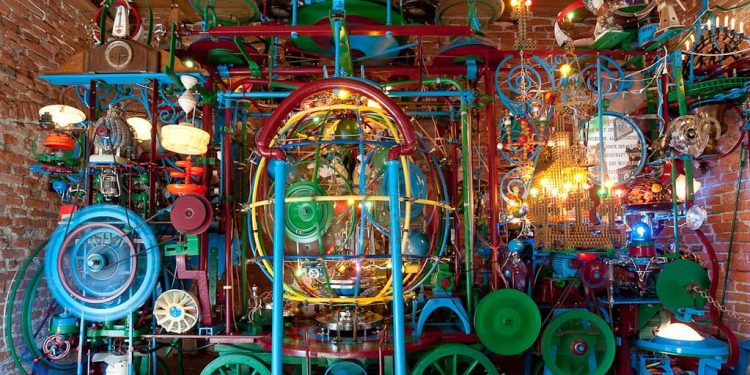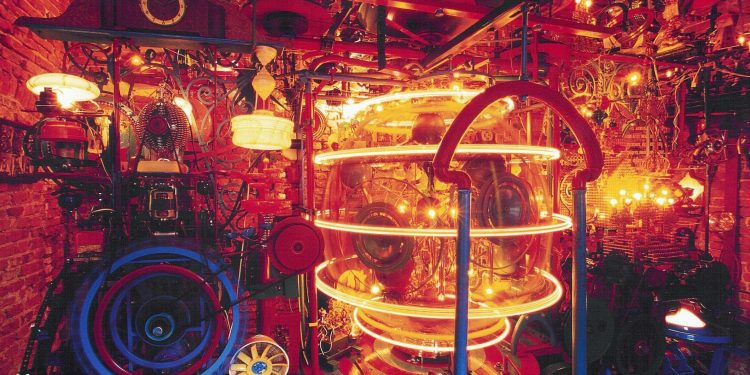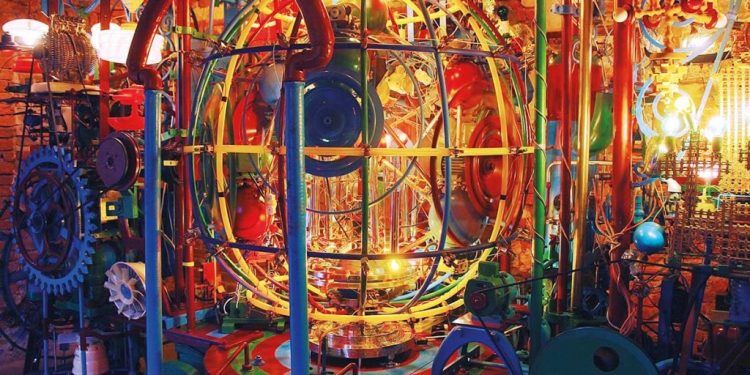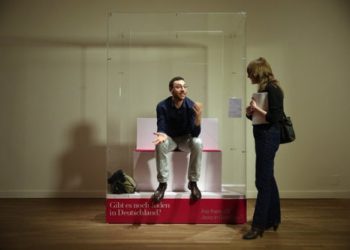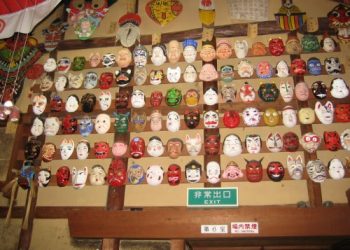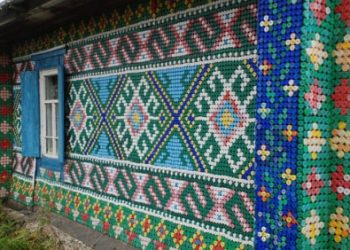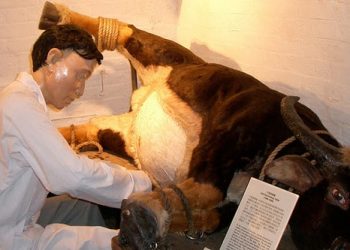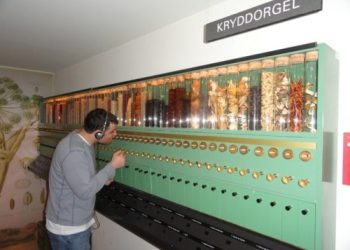In the hills of southern Austria is a farmhouse outbuilding that is home to the Weltmaschine (the World Machine). What is this, you ask? The creator of the machine, Franz Gsellmann, grew up hoping to become an engineer, which never happened because everybody knows dreams don’t come true. But after seeing the iconic Atomium building at the 1958 Brussels World’s Fair, Franz returned home with a model of the Atomium, emptied a room of his farm shed, and constructed an environment around it. Found mostly in second-hand markets or junkyards, the thousands of separate parts of the machine were taken home either by wheelbarrow or oxen, then assembled over a twenty-three year period, while working mostly in secret, to create a strange piece of Kinetic Art.
Some of the random items include a ship’s propeller, two gondolas, a Dutch windmill, a Persian goblet, a salt and pepper set, five crucifixes, a hair dryer, 560 wooden beads, a glass Jesus and Mary statue, the Mercedes star logo, replicas of clock towers, eight lampshades, a barometer, an eagle made of porcelain, a model rocket from Japan, sixty-four bird whistles, a klopotec, two-hundred light bulbs, fifty-three light switches, an organ blower, fourteen bells, a xylophone, and much more. Phew!
About Franz Gsellmann’s Machine
The machine, about four feet long, two feet wide and four feet tall, is a quivering, vibrating, rotating, roaring, glowing and flashing device operated by twenty-five electric motors (see this video if you don’t believe me). With its constant motion and brightly painted surface the machine creates an endless blaze of sound, colour and light. And due to my sound sensitivity and motion sickness, I already have a splitting headache just thinking about it. Apparently when Franz switched the machine on for the first time, the whole village immediately suffered a blackout (kind of like the Super Bowl on Sunday after Beyonce’s performance, which I did not watch, by the way).
Anyway, Franz was proud of his work, cleaning each part every single day. He felt his work was complete and glued a piece of mirror to the gadget with the inscription (translated from Deutsch): “For this short life with toil and sweat have I wought. In the next world I shall do fairer labour for God.” But he died in 1981 before sharing the machine’s true purpose (if there ever was one, but I am sure it was heavenly) with the world, and how to fix the darn thing if it ever broke. Would the World survive without its Creator? By 1993 the company VA Zeltweg restored partial function to the machine. Today with continued sponsorship, the farm and Franz’s workshop, still owned by his family, is open to visitors, which number in the tens of thousands every year.
Some people believe the Weltmaschine represents the inner workings of the soul (huh…machines have souls???) but whatever its meaning, those who have seen it in person never forget it.
Photo
